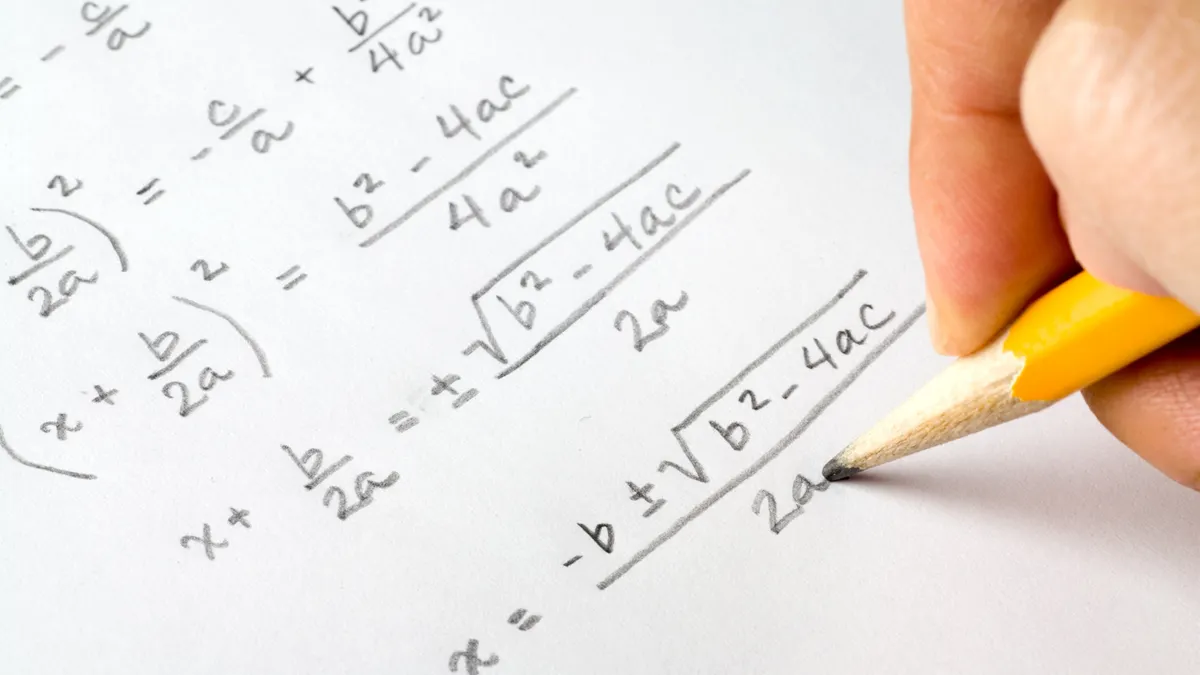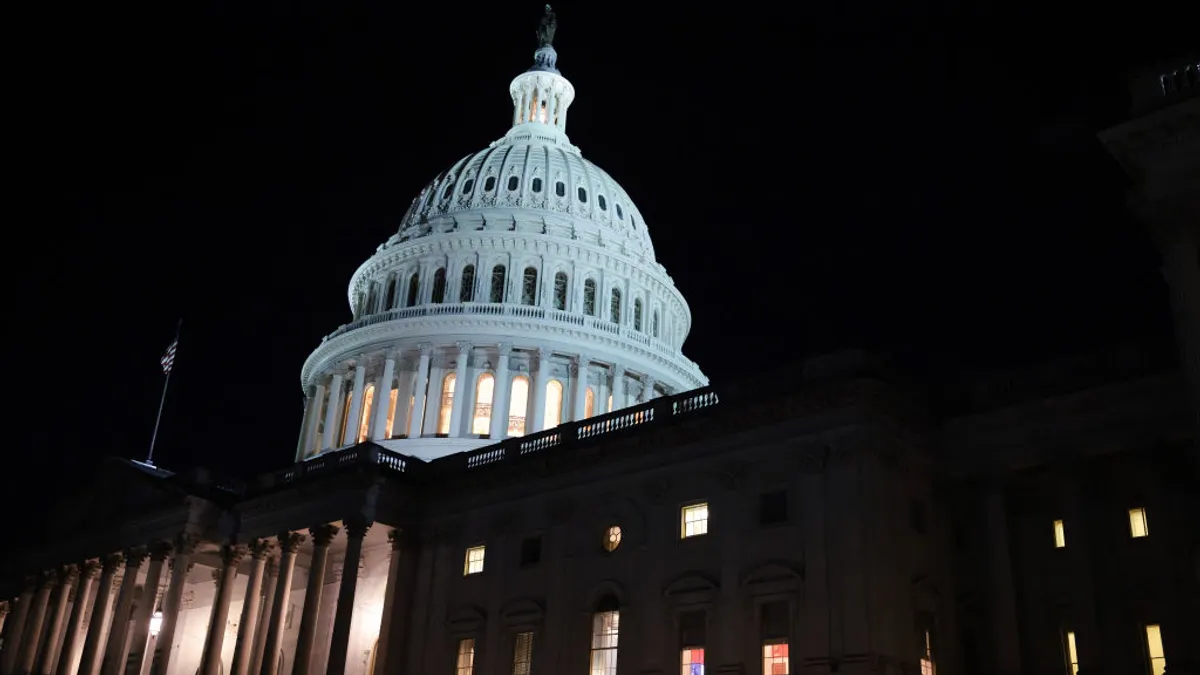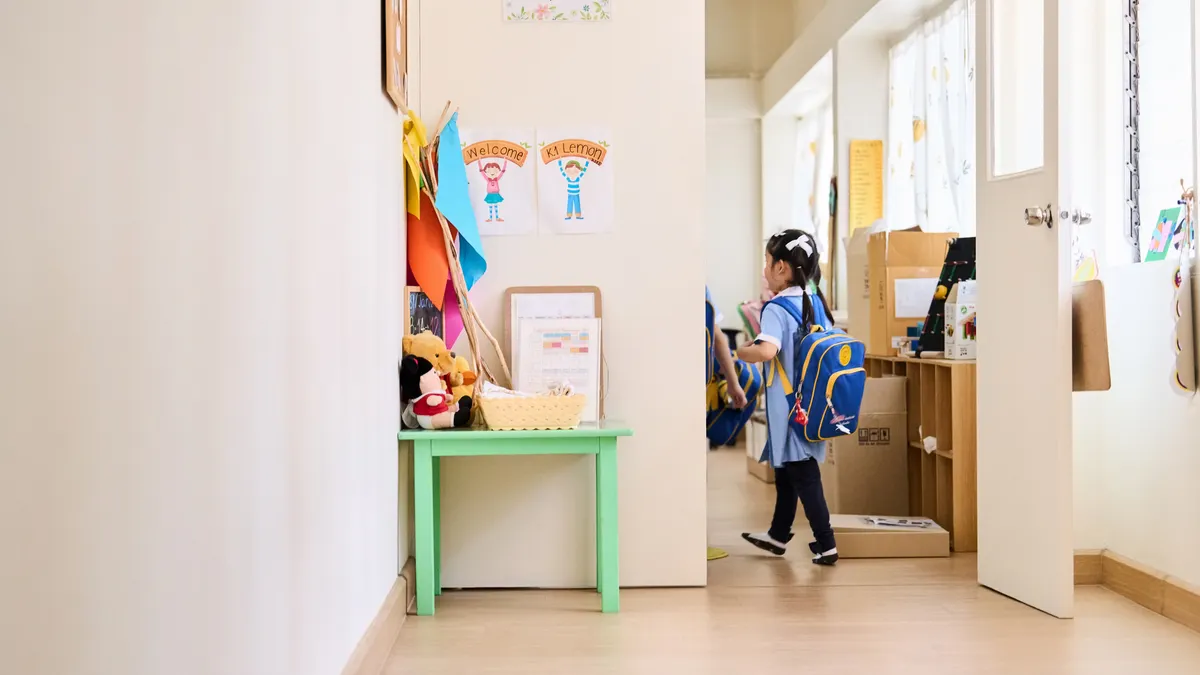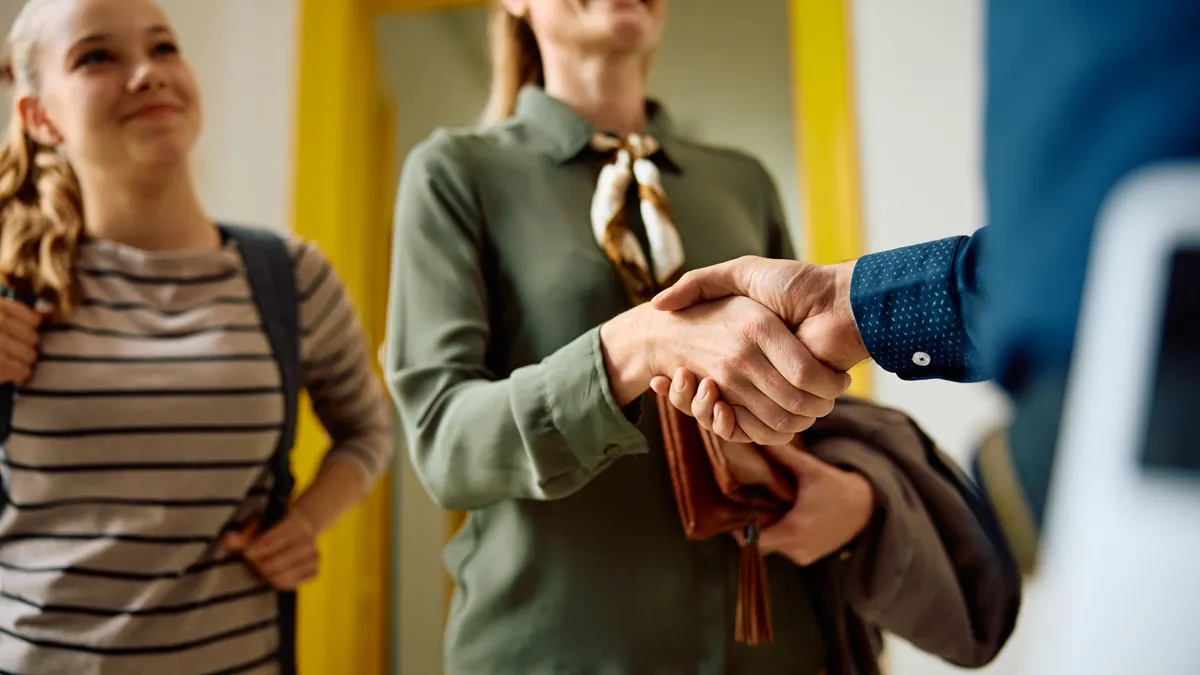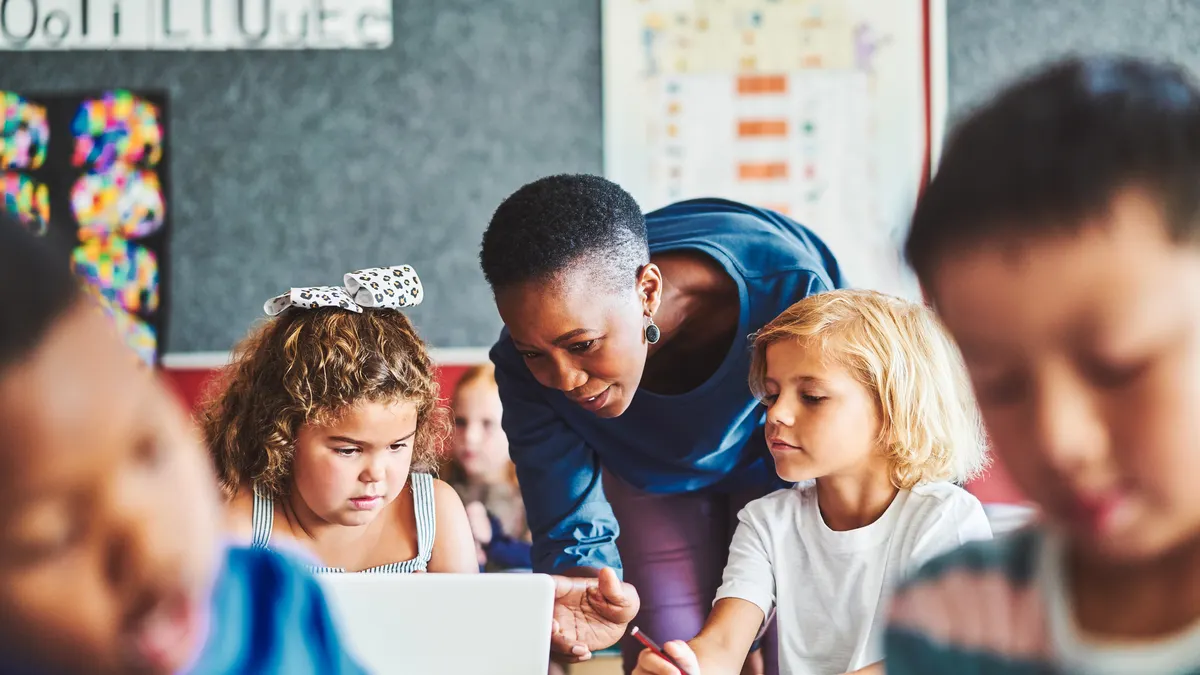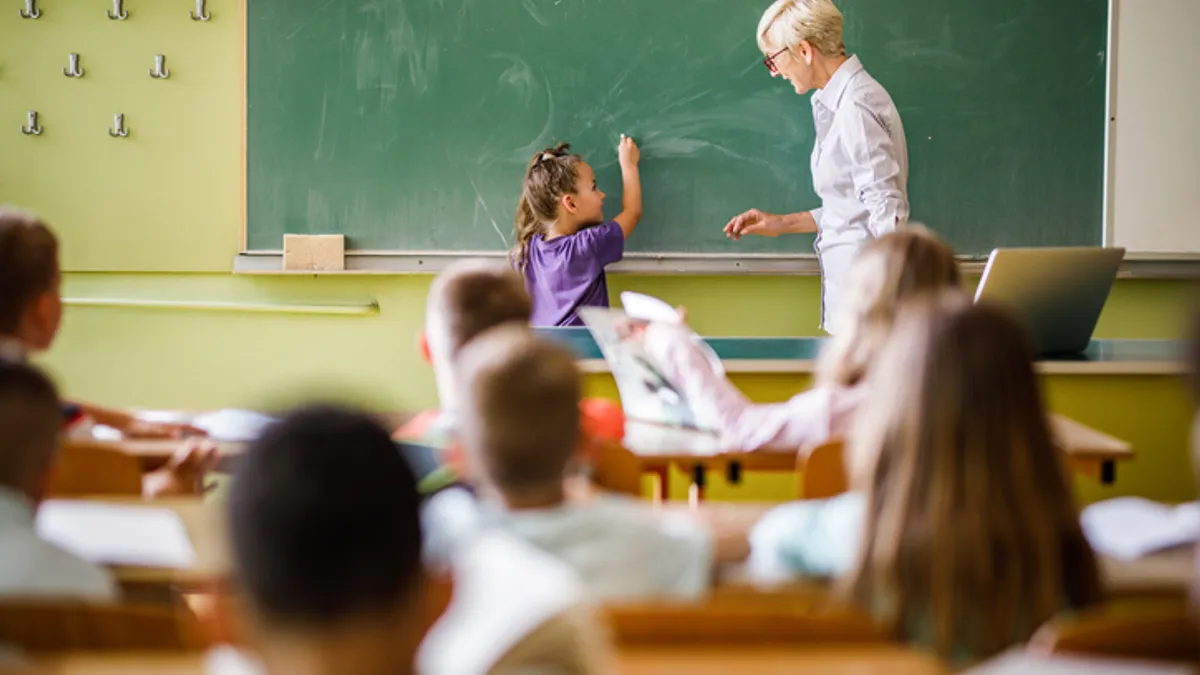For David Cutler, teaching journalism is like driver’s ed: His students might learn a bit in his classroom, but most of their skills will come from getting on the road. And he wants them to start driving early.
"You really learn most of it on the road actually doing it and learning from your mistakes and going back into the field to correct those mistakes," he told Education Dive. "To the best I can, I want to set them out into the field. I want to get them on the road, so to speak, as quickly as possible."
A journalist by trade, Cutler knows the drill. The journalism, government and history teacher at the Brimmer and May School in Chestnut Hill, Mass., has had reporting stints at multiple papers in the state, including The Boston Globe. But something was missing: He wanted to share his passion for journalism and history.
He came back to the classroom full time, where he equips young reporters with the fundamentals – writing ledes, constructing nut grafs and interviewing sources – before sending them off to report.
Other central journalistic pillars, like accuracy and objectivity, are a little more complicated, especially during a time when President Donald Trump and other officials often call them into question. But this "fake news" era, along with new storytelling methods, seems to be causing an upward jolt in journalism school enrollment, The Washington Post recently reported. And it's changing the way teachers like Cutler prepare students for the real world.
During our conversation, Cutler discussed his journalism curriculum, his guidance to students, and how both of these have changed in the face of fake news claims.
EDITOR'S NOTE: The following interview has been edited for brevity and clarity.
EDUCATION DIVE: A high school journalism class is, in a way, the first experience a young person has with practicing journalism. And in some schools, the actual newspaper is a class. So if you sign up for that journalism elective, is it the school newspaper?
DAVID CUTLER: Yes. It’s an elective class — one of the most popular ones. The course has the most sign-ups. If you’re new, I might spend a bit more 1-on-1 time with you before I set you off to be under the wing of your editors. But I do my best not to call it a class, and to call it a newsroom for what it is. I want students to run it completely themselves and I want to be as unneeded as possible, as invisible as possible. That’s the goal.
I learn from them all the time. I still learn from them. I mean, they lead the class, and I’m just curious to see what they’re doing, what tools they’re using and whatnot. I’m always amazed by what they do and how they do it.
The way the class works — are there lessons at the beginning, or class discussions? Or is it mostly reporting?
CUTLER: I’ll take you through a regular day. How it will go is all the reporters and editors will meet in a traditional news meeting, people will share what they’re covering to make sure there’s no overlap — or if there is, that it makes sense. And then they go out into the field, they report, they come back, they touch base with their editor.
But we do talk about [what’s happening in the news]. Like "fake news," the “failing New York Times” and whatnot — those discussions happen. Oftentimes though, I’m not the one to bring those into discussion during news meetings at the start of the class. It’s students who bring those in. There are times when we spent even half of the class, or more, on it, so students bring it up all the time. And not just in journalism, too, but in my other classes — government and history, as well.
What you said is really interesting, how especially now, there’s this intersection of journalism, government and history, and it’s important to have those contextual discussions. Since President Trump started his campaign, has that influenced the way that you approach teaching the class or the guidance you give students?
CUTLER: It depends on the class. In journalism, I make no bones about telling students that I think what Trump is saying about the media is abhorrent and distasteful. I have no problems there at all, because I believe so much in the fourth estate and in established news organizations. I know how they run, I know how they work, there’s no conspiracy. I mean, sometimes they barely have time to file stories. It’s ludicrous to me. But I tell students as much as I can that this is dangerous and unpatriotic. This is how I feel, and this is the truth. It’s important to teach truth, even if your president is espousing something else.
I don’t have any qualms saying I disagree with Trump’s language or his rhetoric. I’m more open to saying that and to sharing my views in those respects with students. But I still leave it to students to discuss and debate his policy decisions. I draw the line there.
It’s more difficult today to be a journalist in some aspects. But we’re seeing reports that enrollment in college journalism schools is increasing, and some are saying it’s in spite of Trump’s views toward journalists. Since Trump’s campaign started, have you seen more people sign up or express an interest in pursuing journalism after graduation?
CUTLER: It’s tough to tell. The school population is quite small — it averages around 30-35 kids per class, so to have 20 students in my class, that’s pretty huge, without it counting for any type of special credit. I don’t know if I see a direct correlation — there’s always been a steady enrollment, but that’s an interesting question. I think what will be telling is enrollment in the spring, if the 2018 elections impact it in any way.
Is it encouraging to you to hear that more people are enrolling in journalism programs?
CUTLER: It’s great. I think people want to tell stories, and people want to be heard, whether that’s as journalists or whatever they do in life. It doesn’t have to just be journalism. I think people want to tell stories and be valued, and I’m thrilled about that. And even if they don’t end up being journalists – I tell my students this all the time – those skills are transferable to other fields. They can tell their stories, and I think that’s what’s missing in America today – people being able to speak clearly and articulately and be heard. The skills I learned in the newsroom were essential with what I’m doing now.
Something else that’s important is the idea of news literacy and educating students on that. What are you doing on that front, and what do you think needs to be done to address this issue?
CUTLER: When people ask me that question, I respond in two ways. One, are we doing enough? We can always do more. It’s an essential thing that I’m worried about. There’s always more that teachers can do. I know some schools are offering courses just in news literacy, and some are making it a part of their existing curriculums, which is what I do.
But it can’t just be up to us. Parents need to model this behavior at home as well. It just can’t fall only on teachers’ shoulders. Otherwise, we’ll just stay in the same place. That’s the biggest challenge, I think. I don’t even care, right-wing [news] or left-wing [news], get as many different views as you can … There are opportunities everywhere, you know?
Amid this talk of fake news and disinformation, but more broadly, the rise in some of these different viewpoints, some say Trump’s rhetoric gives a voice to some of these groups. But regardless, there’s a need for these discussions with multiple perspectives.
CUTLER: I think it’s important for students to always feel physically safe. That’s essential. They must feel physically safe, and to an extent, they need to feel emotionally safe. That’s also really important. But not to the extent that other ideas, however offensive, are being stifled. That’s where we do students a disservice. There is a way to introduce these ideas and say, ‘Look, these are offensive ideas. These are racist ideas. But these are ideas that are out there that we need to confront.’ And the best way to confront these ideas is not by sheltering students from them, but by confronting these issues and teaching students truth and history and how to be creative thinkers to tackle issues. Because we don’t do them any service, in any school, by completely sheltering them from these realities.
That’s what democracy is about. You might not like what they have to say, but you should fight for the right to say it. And that’s what I want students to know and value.
I want to make clear that I think that school should be an emotionally safe place. At the same time, I don't think that should mean schools should necessarily shield students from upsetting or controversial content. We need to be mindful of individual needs and circumstances, of course, but at the same time, we must continue to play a vital role in helping students foster resilience. We must equip young people with the knowledge and skills to discredit ideas and stances, however offensive, in open debate. Along these lines, I think that learning the craft of journalism, which teaches effective communication on multiple levels, goes a long way toward accomplishing this goal.






